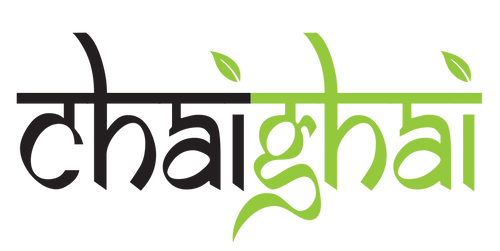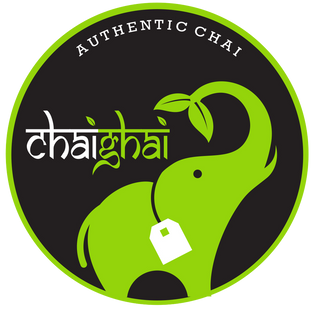“Wishing you the energy of Maa Durga, the poise of Maa Saraswati;
Wishing you a warm and blessed Navratri.”
Indian culture is one deeply rooted in family and togetherness. The common custom when spending time with family or friends is to offer them a cup of Chai. It is this intangible feature of connection that makes chai so special in India. The togetherness that chai creates along with the love it signifies are both reasons why it is India’s national drink. It is our goal to share with you the cultural significance of these celebrations. In shedding light on these celebrations, we also look to shed light on how chai truly connects families and friends. It is this connection it brings that makes it so important to Indians. We would like to wish our entire Chai Ghai Family a happy Navratri. As September begins to bring in colder weather, connect with family and friends over a cup of Mummyji’s Masala Chai this Navratri, and enjoy the warmth of both.
What is Navratri?

Within Indian traditional customs, blessings and good fortune come in many unique and interesting forms. As such, throughout the year there are many different celebrations that help to shape Indian culture. From the Lohri festival in January to the Holi festival of colours in March and Diwali in November; the Navratri festival brings with it an opportunity to commemorate the triumph of good over evil. Navratri is an Indian festival that finds its roots in the legends of old, where the goddess Durga vanquished the demon Mahishasura. One of the most significant themes of Navratri is the importance of the divine feminine and the ideals that are supported through Motherhood, including wisdom and protection. Let’s take a look at what makes Navratri unique amongst the many other Indian celebrations that occur during the year. To check out more information on other Indian festivals we have highlighted previously, please refer to some of our other Chai Guides on Lohri, Holi and Diwali.
Everything You Need To Know About The Indian Festival Lohri – Chai Ghai
Everything You Need to Know About the Indian Festival Holi – Chai Ghai
The True Meaning of Diwali – Chai Ghai
What Date Does Navratri Fall on This Year?

Navratri begins on Monday September 26th in 2022, during the month of Ashvin in the Hindu calendar, at the beginning of autumn, or sharada. The festival lasts 9 nights and 10 days, with the name Navratri, coming from the Sanskrit Nava, meaning nine and Ratri, meaning nights. For this reason, from September 26th to October 5th we are having a special Navratri sale. We are offering 30% chais that have been selected specially for Navratri. The first act of Navratri begins early in the morning of the first day called Pratipada and is marked by the ritual of Ghatasthapana. This begins with a pot, or kalasha, symbolizing the goddess Durga being placed, with seeds that are watered during the festival and grow into yellow grass, called jamara. The first day of Navratri is dedicated to Shailaputri, with the colour yellow used to symbolize vitality. The second say, Dwitiya focuses on calm with the goddess Brahamacharini and the colour green used as symbols. On Tritiya, the third day, Chandraghanta, with her third eye always open, symbolizes bravery with the colour grey used to represent vivacity. These three incarnations are directly related with Parvati and the commemoration of Chandraghanta, represents how Parvati chose to decorate her forehead with a crescent moon, known as ardhachandra. The fourth day of Navratri, called Chaturthi, is dedicated to Kushmanda and the importance of crops, with orange used to celebrate growth. Panchami, the fifth day belongs to the strength of Skandamata and white is used to show the protective powers of her motherhood. The goddess Katyayani along with the colour red, used to depict courage is the main focus of Shashtami, the sixth day of Navratri. Kalaratri and royal blue, representing the fiercest of Durgas avatars, is celebrated on the seventh day, Saptami. On the eighth day, Ashtami, Mahagauri and the colour pink portray optimism and warmth. On October 4th, the ninth day called Navami, prayer is given to Siddhatri, with the colour purple and nature’s beauty as the focal points of the day. Navratri often culminates with a 10th day, Dussehra or Vijayadashami, which depicts the triumph of Rama over the demon king Ravanna. Each of the nine days of Navrati are focused on one of the nine incarnations of Goddess Durga, known as the Navadurga, with different dedications and colours associated to that specific day and avatar.
Navratri 2022 | Navratri 2022 Start & End Dates | Durga Puja Celebration (prokerala.com)
How Do Indians Celebrate Navratri?

Navratri is celebrated in different ways according the traditions of the area it is worshipped in, but one defining characteristic of the various ceremonies is they center on the goddess Durga. The other common theme is celebrating with family and friends. Durga and her defeat of Mahishasura form the basis upon which Navratri is built. Celebrations include vrat or fasting and dancing, as well as various rituals that honour the goddess Durga and her avatars. Foods that include onions or garlic are avoided throughout Navratri and meat is as well, in most instances. There are a number of foods usually served during the Navratri festivities, with ingredients such as milk, yogurt, paneer, bananas and potatoes among the most popular. Different types of Aloo, potato dishes and Sabudana, tapioca dishes are traditionally served and drinks such as a lassi or chai often accompany them. Vrat can also occur during Navratri whereby only fruits and water are consumed, with some also observing fasting during the latter part of the festival. Dancing is another popular act during Navratri, particularly in Gujarat, in Western India, where a type of dance called Garba is performed. Music is provided by drums known as dhol or dholak and performances are characterized with big, sweeping circular movements accompanied by singing. Another type of dance involving Dandiya sticks are often performed following Garba, where the sticks symbolize the sword of Durga in her fight with Mahishasura. Aarti, rituals that involve offering light in worship to remove darkness are performed for the goddess Durga on the first three days of the festival. During the second three days prayers are offered to Lakshmi, goddess of good fortune and the last three days prayers are made to Saraswati, goddess of knowledge, in many areas of southern India. In eastern Indian states such as Bengal, Navratri is known as Durga Puja, where puja is the Sanskrit word for worship. There are also nine edicts or blessings that followers pray to Goddess Durga for during the Navratri festival, including fame, name, wealth, prosperity, happiness, education, health, power and commitment. The practices that take place during Navratri demonstrate practitioner’s devotion to Goddess Durga and her nine avatars; while Pandals, structures used to venerate or worship at are often erected or visited as well. These celebrations bring family and friends together to jointly participate in the different cultural activities that help to bind them together in the celebration of the divine feminine.
Navratri | Description, Importance, Goddess, & Facts | Britannica
Is Navratri an Important Celebration for Indians?

The importance of the celebration of Navratri stems from the value that is placed on the goddess and divine feminine power is at the forefront during its festivities. Devi Mahatmya, part of the Markandeya Purana, is a Hindu philosophical legend that describes Goddess Durga’s battle; purporting her to be the creator of the Universe and a being of supreme divine power. This famed text, which is sometimes claimed to be on the level of the Bhagavad Gita in Hindu tradition culture, lays out the significance of Shaktism, where the goddess is the source of all creation. Devi, Sankrit for goddess, is revered as the feminine nature of god and worshipped as such. Mahadevi, the supreme goddess, from which all other goddess’s including Durga, Lakshmi, Parvati, Saraswati and Kali are manifested, signifies the center of divine power in Shaktism. According to different traditions, sects and ideologies within Hinduism, these among other various goddesses’ are worshipped as the Mahadevi within each denomination. During the festivities of Navratri Goddess Durga and her nine incarnations are focused on and given reverence for their strength and divinity. The celebration of Navratri is another example of how Indian culture is deeply rooted in family. Although we have discussed the religious importance in detail, the cultural importance lays in the family gatherings and the connection they bring.
Significance of Chaitra Navratri and Sharad Navratri | The Art of Living India
“May Devi’s exuberance light up your home and heart.
Happy Navratri.”

Navratri brings with it the chance to celebrate the divine feminine power of the goddess Durga and her triumph of good vs. evil over Mahishasura. The festival of Navratri further offers the symbols of strength, good fortune and knowledge through the veneration of Durga, Lakshmi and Saraswati. These ideals are the focus of the 9 nights and 10 days of the festival and serve as a way to gain good fortune and guidance from the goddess Durga. To celebrate Navratri this year are offering a 10-day sale with 30% off chais specifically selected for Navratri. Celebrations center on dance, prayer, meditation, fasting or the observing of certain foods that last throughout the festivities. Often on the final day of Navratri worshippers commemorate the festival by submerging themselves in water and burning effigies that symbolize the destruction of the demon Mahishasura. These celebrations help to cement the significance that the supreme divine power of the goddess Durga and her nine incarnations hold within Hindu traditions. The cultural significance of Navratri goes beyond goddess and deities, it is deeply rooted in family and togetherness. Happy Navratri to all our Chai Ghai Family. We wish that you can share some time with your family and friends this Navratri. Enjoy a cup of traditional Indian Chai with them embracing the most important Indian tradition of connecting with family.




